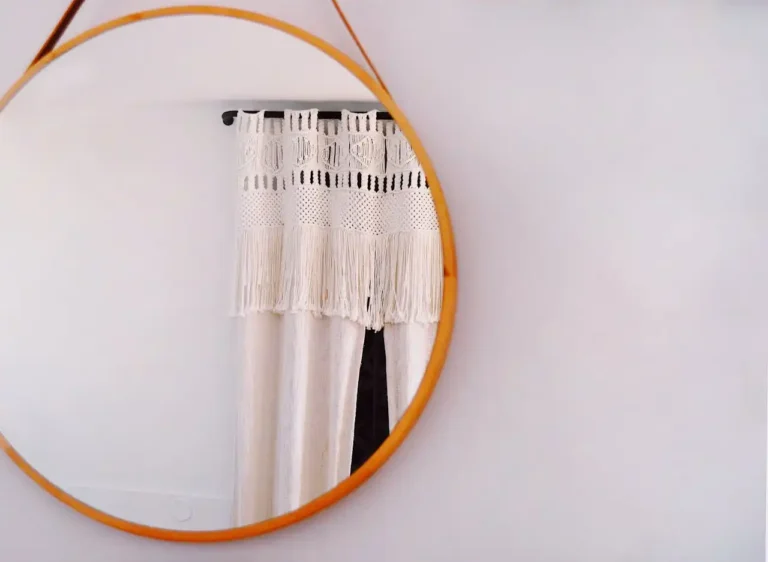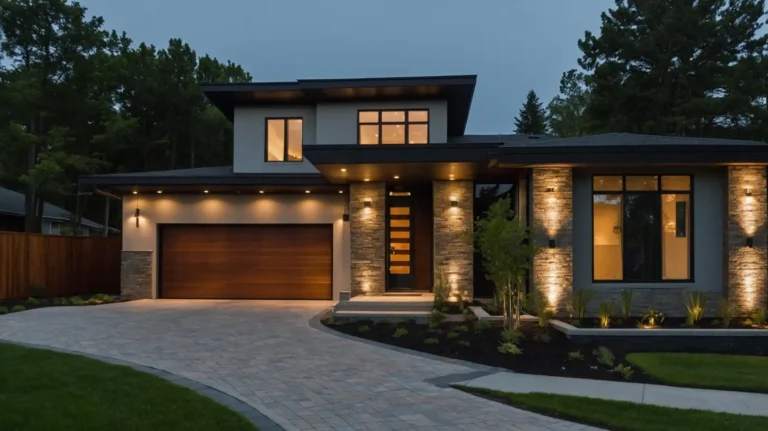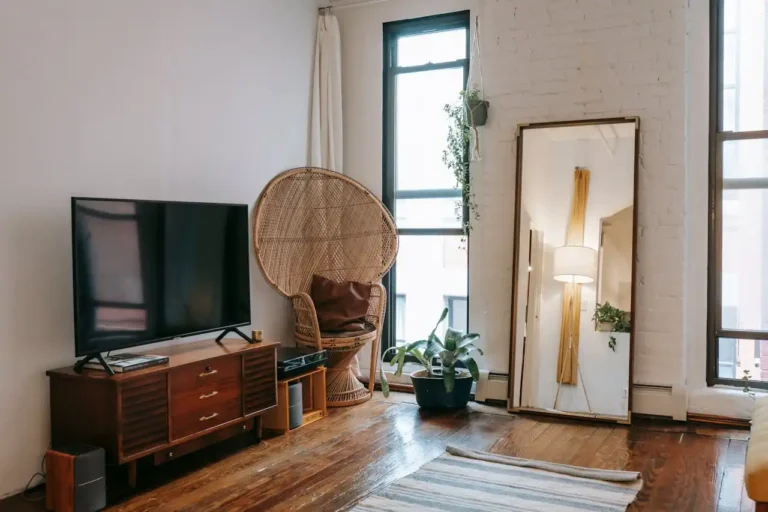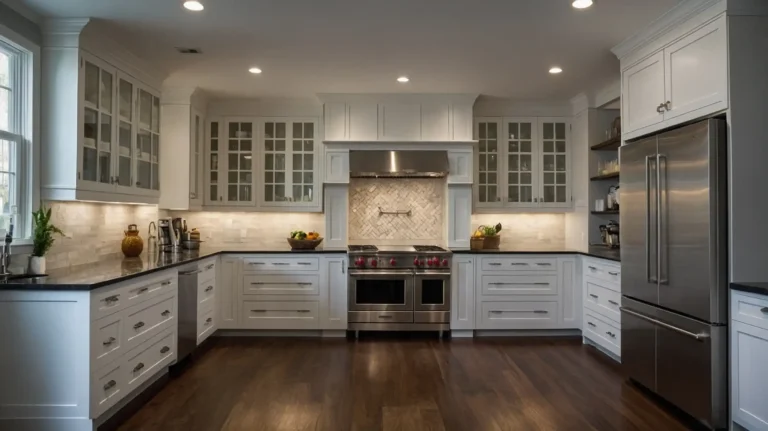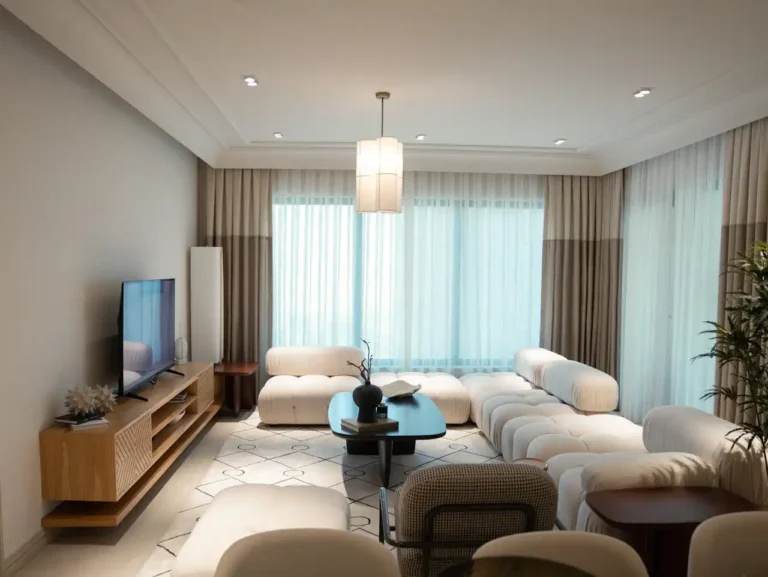27 Eye-Catching Front Flower Bed Ideas to Boost Your Home’s Curb Appeal
Your front yard creates the first impression of your home, and a well-designed flower bed can transform your curb appeal instantly.
These versatile landscaping features frame your property, highlight architectural elements, and showcase your personal style through color and texture.
With the right design approach, front flower beds can work magic for any home regardless of size or style.
From formal arrangements to wild cottage gardens, the possibilities are endless for creating an inviting entrance to your property.
Ready to upgrade your home’s exterior?
These 27 front flower bed ideas will inspire you to create a stunning landscape that welcomes visitors and brings you joy every time you return home.
1: Curved Border Beds

Design gently flowing curved beds along your front walkway or property line instead of straight edges.
These organic shapes create visual interest and a more natural, welcoming approach to your home.
Use a garden hose or rope to lay out pleasing curves before digging.
Choose varying heights of plants with taller varieties toward the back to create depth.
Consider how the curves will look from different viewing angles, including from inside your home looking out.
2: Tiered Flower Beds

Build multi-level planting areas using retaining walls or natural stone to create dimension in your front yard.
This approach works especially well on sloped properties but adds interest even on flat lots.
Each tier provides an opportunity to showcase different plant varieties and colors.
Use the highest tier for taller specimens and work your way down to ground covers.
For a cohesive look, repeat similar plants or colors throughout each level while varying the density.
3: Foundation Plantings 2.0

Modernize the classic foundation bed by moving beyond basic evergreen shrubs.
Create a dynamic mix of flowering perennials, ornamental grasses, and compact shrubs that provide year-round interest.
Leave adequate space between plants and your home’s foundation for proper air circulation.
Choose plants with varying bloom times to ensure color throughout the growing season.
Consider your home’s architecture and color when selecting plants to complement rather than compete with the structure.
4: Mailbox Garden Oasis

Transform the often-neglected space around your mailbox into a charming focal point with a circular or kidney-shaped bed.
This unexpected garden moment creates curb appeal even before visitors reach your main landscape.
Select low-maintenance, drought-tolerant plants that won’t obstruct mail delivery.
Include plants with different heights, placing taller varieties behind the mailbox.
Consider adding spring bulbs for early season color and evergreen elements for winter interest.
5: Formal Symmetrical Designs

Create a classic, balanced appearance with identical planting beds mirroring each other across your front walkway.
This traditional approach brings order and elegance to your entrance.
Choose matching plants and arrange them in the same pattern on both sides. For maximum impact, include precisely trimmed hedges or topiaries as anchor points.
Maintain clean, crisp edges between lawn and flower beds to enhance the formal aesthetic.
6: Native Plant Showcase

Design an eco-friendly front bed featuring plants indigenous to your region.
These native species attract local pollinators while requiring less water, fertilizer, and overall maintenance.
Research plants that naturally grow in your climate and soil conditions.
Group species with similar water and sunlight needs together for easier care.
Include informative plant markers to spark conversations about local ecology and inspire neighbors.
7: Four-Season Interest Beds

Plan your front flower beds to shine through all four seasons with carefully selected plants.
This strategic approach ensures your curb appeal never takes a vacation.
Include spring bulbs, summer perennials, fall foliage plants, and winter-interest shrubs with colorful bark or berries.
Consider the “bones” of your garden during dormant months.
Document your garden through the seasons to identify and fill any periods lacking color or texture.
8: Monochromatic Color Scheme

Create sophisticated impact by limiting your flower bed to variations of a single color family.
This designer technique creates a cohesive, elegant look that draws attention without appearing busy.
Choose different plant varieties with similar hues but varying heights and textures.
Consider how the color will complement your home’s exterior paint and materials.
Include silver or gray foliage plants as neutral accents that enhance your chosen color palette.
9: Raised Stone-Edged Beds

Define your planting areas with stacked stone, pavers, or commercial edging materials to create clean boundaries.
These raised edges prevent soil erosion while adding architectural interest to your landscape.
Select materials that complement your home’s exterior for a coordinated look. Consider the height carefully—4-12 inches typically works well for front yard applications.
Install edging that allows for easy lawn maintenance without damaging your flower beds.
10: Drought-Tolerant Xeriscape

Design water-wise front beds using plants adapted to thrive with minimal irrigation once established.
This sustainable approach reduces your water bills while creating a distinctive landscape.
Group plants with similar water needs together in designated zones.
Incorporate decorative rock, gravel, or mulch to retain soil moisture and reduce weeds.
Include flowering varieties like lavender, salvia, and coneflowers that provide color while tolerating dry conditions.
11: Cottage Garden Style

Create a charming, seemingly effortless display of abundant flowers in a relaxed, informal design.
This romantic style features densely planted beds overflowing with colorful blooms.
Mix annuals, perennials, and flowering shrubs in a naturalistic arrangement.
Include traditional cottage favorites like roses, hollyhocks, daisies, and foxgloves.
Allow plants to self-seed and gently spread for that authentic cottage garden charm.
12: Evergreen Framework

Design beds with evergreen shrubs as the backbone, then layer in perennials and annuals for seasonal color.
This approach ensures your front yard maintains structure year-round.
Choose diverse evergreens with different textures and shapes rather than a single variety.
Plant flowering specimens between evergreens to create a rhythm of color during growing seasons.
Consider the mature size of evergreens to prevent overcrowding or blocking windows as they grow.
13: Ornamental Grass Accents

Incorporate graceful, low-maintenance grasses into your front beds for movement, texture, and four-season interest.
These versatile plants bring a contemporary feel to traditional landscapes.
Select varieties appropriate for your climate and available sunlight.
Mix different heights and colors, from blue fescue to towering miscanthus.
Position grasses where their unique silhouettes can be backlit by morning or evening sun.
14: Tropical Paradise (Even in Cool Climates)

Create a lush, exotic feel using broad-leaved plants and vibrant flowers regardless of your climate zone.
This bold style makes a dramatic statement in your front yard.
Use hardy plants with tropical appearances like cannas, elephant ears, and hardy bananas.
In colder regions, complement with annuals that provide tropical aesthetics during summer months.
Arrange plants densely to create the lush, layered look characteristic of tropical gardens.
15: Rock Garden Integration

Design flower beds that incorporate decorative stones and rock-loving plants for a distinctive, low-maintenance landscape.
This approach works particularly well in challenging areas with poor soil.
Select drought-tolerant plants like sedums, sempervivums, and creeping thyme that thrive in rocky environments.
Arrange rocks of varying sizes organically, partially burying larger specimens for a natural look.
Create pockets of quality soil between rocks where plants can establish strong root systems.
16: Classic Bulb Displays

Plant masses of spring-flowering bulbs for spectacular seasonal color that announces the end of winter. These easy-growing plants provide reliable impact with minimal effort.
Place bulbs in sweeping drifts rather than formal rows for a more natural appearance. Layer early, mid, and late-season varieties to extend the show for months.
Plant bulbs among perennials that will grow later in summer to hide fading foliage.
17: Children-Friendly Sensory Beds

Design front flower beds that engage the senses with interesting textures, scents, and colors.
These interactive gardens create memorable experiences for family and visitors alike.
Include soft lamb’s ear, fragrant herbs, and brightly colored flowers at accessible heights. Avoid thorny plants or toxic species in areas where children might touch or explore.
Add whimsical elements like small sculptures, weather-resistant markers, or child-sized stepping stones.
18: Topiary Focal Points

Incorporate carefully pruned shrubs as living sculptures within your front beds.
These formal elements add year-round structure and create visual anchors for your landscape design.
Start with shrubs that respond well to shaping, like boxwood, privet, or yew.
Begin with simple forms before attempting complex shapes.
Position topiaries where they’ll be viewed from multiple angles and pair with lower-growing plants that won’t compete for attention.
19: Vertical Element Integration

Include tall, narrow plants or garden structures to create height variation in your front yard.
This technique draws the eye upward and adds architectural interest to flat landscapes.
Select columnar trees, tall perennials, or sturdy garden obelisks as vertical accents.
Position taller elements where they frame key features of your home without blocking views.
Space vertical elements throughout your beds to create rhythm and prevent a flat, one-dimensional appearance.
20: Pollinator Paradise

Design front flower beds specifically to attract and support bees, butterflies, and hummingbirds.
These vibrant gardens buzz with activity while supporting crucial ecological functions.
Include nectar-rich flowers with different bloom times to provide food throughout growing seasons.
Plant native milkweed for monarch butterflies and deep-throated flowers for hummingbirds.
Add a small, shallow water source and avoid using pesticides that harm beneficial insects.
21: Edible Front Landscapes

Incorporate beautiful food-producing plants into your front flower beds for productive, ornamental displays.
This practical approach combines aesthetics with sustainability.
Mix colorful lettuces, kale, and Swiss chard with traditional flowers.
Include edible flowers like nasturtiums and herb plants with attractive foliage.
Maintain tidy edges and regular harvesting to keep your edible landscape looking intentional rather than neglected.
22: Woodland Edge Inspiration

Create a naturalistic front garden inspired by forest edges with layered plantings of shade-tolerant species.
This relaxed style works beautifully for homes with mature trees.
Include spring ephemerals, ferns, hostas, and smaller understory shrubs.
Add woodland floor plants like wild ginger and foamflower beneath taller specimens.
Use leaf mulch rather than bark to enhance the forest-inspired aesthetic and improve soil health.
23: Year-Round Berry Display

Plant shrubs that produce colorful berries for multi-season interest and bird attraction.
These hardworking plants provide flowers, fruit, and wildlife activity throughout the year.
Select varieties with different fruiting periods like early elderberries and winter-persistent hollies.
Consider berry colors that complement your home’s exterior and other garden elements.
Position berry-producing plants where fallen fruit won’t stain hardscaping or create slipping hazards.
24: Water-Wise Rain Garden

Transform low areas or drainage sites into beautiful planted depressions that capture rainwater.
These functional gardens prevent runoff while creating unique habitat for moisture-loving plants.
Design with a deeper center and gradually sloping sides planted with species tolerant of both wet and dry conditions.
Include plants with fibrous root systems that help filter water as it percolates.
Position rain gardens at least 10 feet from your foundation to prevent potential moisture issues.
25: Night Garden Features

Design front beds with elements specifically selected to shine after sunset.
These evening-focused gardens extend your curb appeal into nighttime hours.
Include white or light-colored flowers that glow in moonlight or landscape lighting.
Plant evening-scented varieties like nicotiana, evening primrose, or moonflower.
Add reflective elements like gazing balls or metallic garden art that capture and amplify limited light.
26: Minimalist Modern Design

Create contemporary front beds using limited plant varieties arranged in bold, geometric patterns.
This clean-lined approach complements modern architecture and creates strong visual impact.
Select just three to five plant types and arrange them in large masses or precise rows.
Focus on interesting foliage rather than flowers for year-round structure.
Maintain crisp edges and precise spacing to preserve the intentional design aesthetic.
27: Seasonal Color Rotation
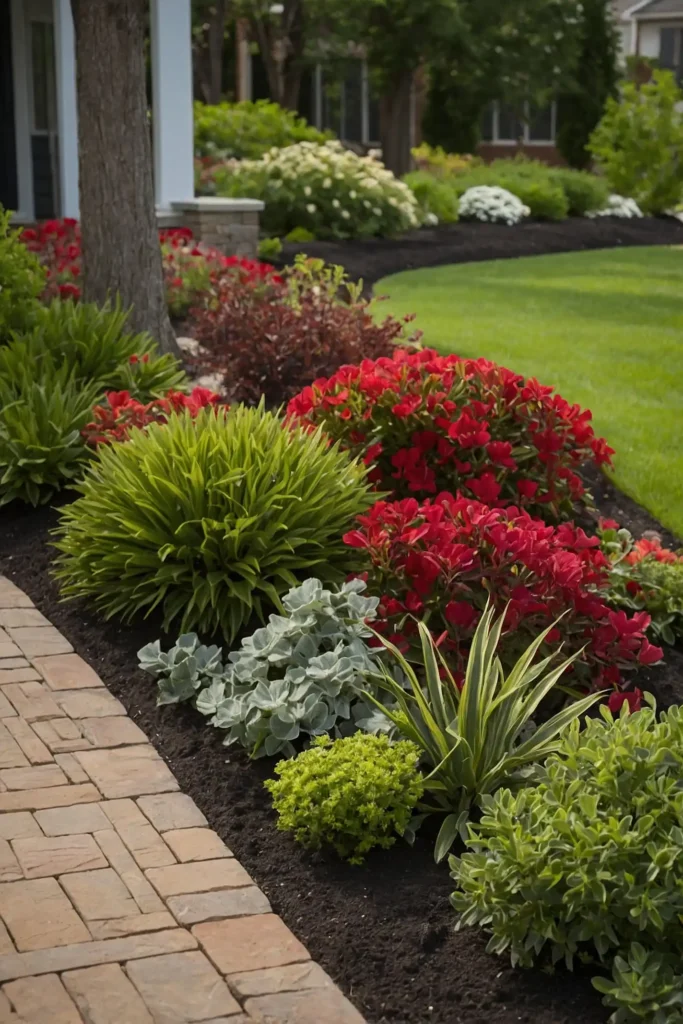
Design your front beds with designated areas for changing seasonal displays that ensure continuous color.
This approach allows for creative experimentation while maintaining landscape structure.
Dedicate specific spots near entry points or focal areas for seasonal replacements.
Maintain permanent “backbone” plants that provide consistency while seasonal elements change.
Keep a calendar of planned rotations with plant lists for each season to simplify maintenance.
Conclusion
With these front flower bed ideas, you’ll create an inviting landscape that enhances your home’s architecture and reflects your personal style.
Start with one concept or combine several for a custom approach that brings you joy throughout the seasons.



